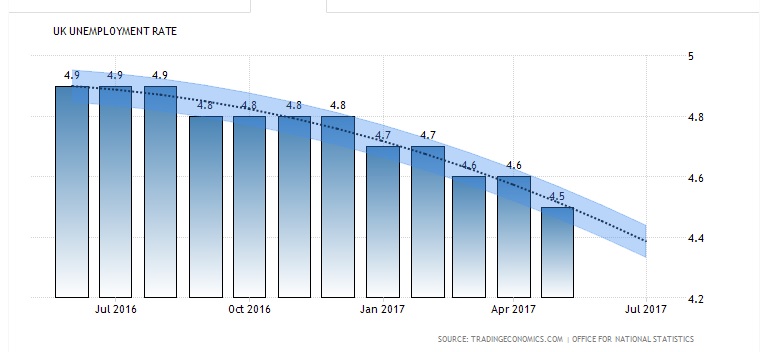The Bank of England announced U.K.’s lowest unemployment rate of 4.5% in 45 years thereby triggering comments across the media channels that a rate hike could be next on the cards. However, when you look at the entire basket of numbers released on the most recent jobs report, it could be unwise to jump into hiking the base interest rate, especially given the fact that inflation slowed last month contrary to predictions.
This is because, despite the impressive unemployment rate posted, wages remain low while the U.K. Household Debt to GDP ratio continues to rise. While it is correct to assume that a majority of this debt is tied to the mainstream lending sector, an increase in the unemployment rate could push some of the borrowers to source for loans in the alternative lending markets that include lenders that offer loans to unemployed people. And while the overall consumer credit numbers indicate an upward trending movement, it hasn’t been smooth at all. So, it is hard to predict where it’s actually going next.
As for the wages, the most recent numbers based on research done by the Office for National Statistics (ONS) indicate that the total pay for employees in the U.K., including bonuses, fell by 0.7% in real terms between March-May 2016 and March-May 2017.
While it has been reported that some of the Bank of England committee members voted for a rate hike during a meeting held in Scotland a few weeks ago, there are those who believe that the economy is yet to reach a level that calls for a rate hike. The U.K. unemployment rate has been falling over the last 12 months dropping by 0.4 percentage points since August last year to 4.5% in May 2017.

Based on the current forecasts, the rate is expected to remain at this level for the next few months, but if the Bank of England hikes rates, this could change. A higher base interest rate would trigger a rise in lending rates. This is not always a good thing for an economy especially when it’s on a recovery trail.













Leave A Comment